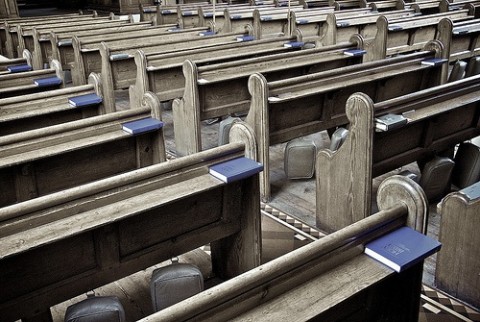No shows: The decline in worship attendance

Many people assume that there has been a steady decline in worship attendance for all the mainline denominations since the mid-1960s—the era when most of them began to see their memberships decline. But trends in attendance—usually thought to be a better indicator of church vitality than trends in membership—have actually followed their own patterns.
For example, the Episcopal Church reported higher attendance in 2000 than in any year since 1991, the year the denomination began recording attendance figures. The United Methodist Church reported worship attendance figures in 2000 that were higher than those in the mid-1980s. The Evangelical Lutheran Church in America had relatively flat attendance rates in the years before 2001, and the Presbyterian Church (U.S.A.) in the 1990s had several years showing modest gains in attendance.
But the years following 2001 have shown a deep recession in worship attendance (see graph below). The losses in worshipers year after year were more dramatic than what data from the previous decade would have predicted.




